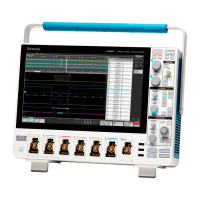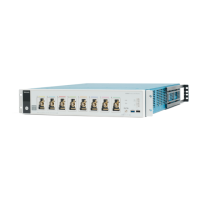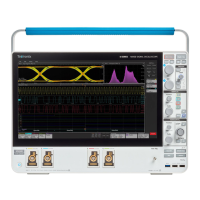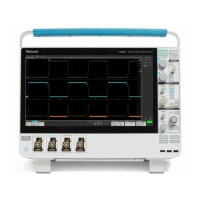Rise Time measurement algorithm
Rise T
ime is the time required for an edge to rise from the low reference level to the high reference level. By default the measurement is
from reference level 10% amplitude to 90% amplitude.
The following figure shows a rising edge with the two crossings necessary to calculate a Rise Time measurement.
1. Searching from Start to End, find the first sample in the measurement zone less than LowRef.
2. From this sample, continue the search to find the first (positive) crossing of LowRef. The time of this crossing is the low rise time or
TLR. (Use linear or sin interpolation if necessary.)
3. From TLR, continue the search, looking for a crossing of HighRef. Update TLR if subsequent LowRef crossings are found. If a HighRef
crossing is found, it becomes the high rise time or THR. (Use linear or sin interpolation if necessary.)
4. RiseTime = THR – TLR
Setup
Setup T
ime is the time between the mid reference level crossing of the clock source (Source1) and the closest previous mid reference level
crossing of the data source (Source2). The crossings (edges) may be configured to be rising, falling or either.
Measurement algorithms
2 Series MSO MSO24 and MSO22 263
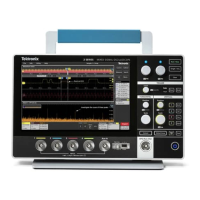
